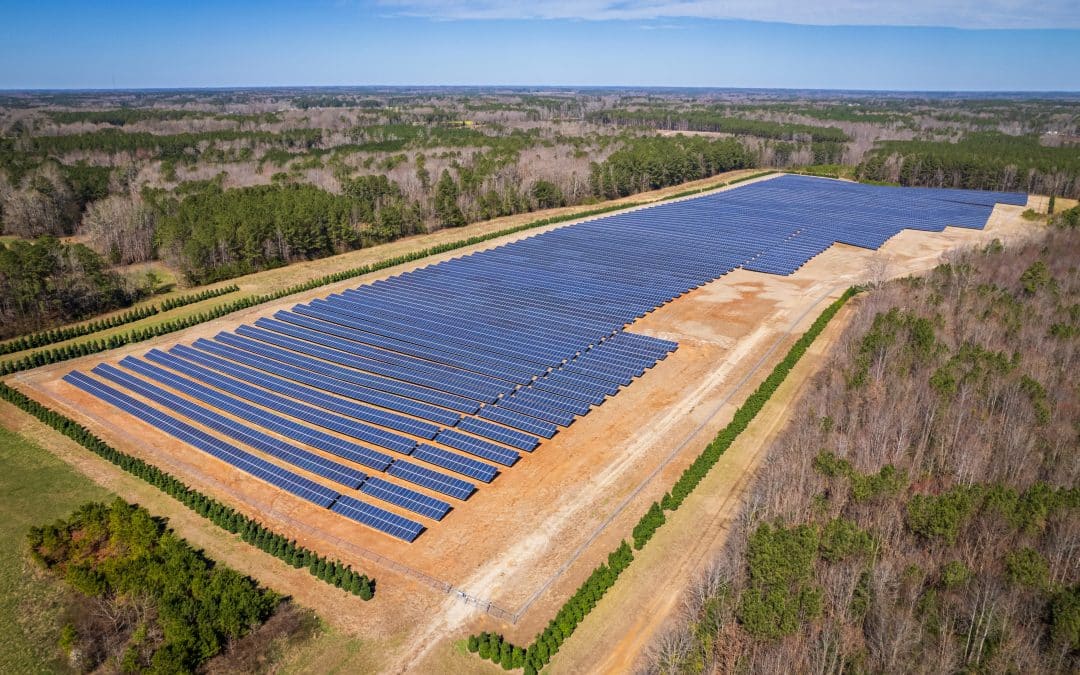Solar Farm 101 for Beginners
A solar farm is a large-scale system that generates electricity from sunlight using solar panels. The components of a solar farm include the solar panels, inverters, transformers, switchgear, and transmission lines.
The solar panels are typically installed in rows or arrays and consist of photovoltaic (PV) cells that convert sunlight into electricity. The panels are mounted on racks that are anchored to the ground or on tracking systems that follow the movement of the sun to maximize energy production.
The inverters are responsible for converting the direct current (DC) produced by the solar panels into alternating current (AC) that is compatible with the electric grid. They also ensure that the power output of the solar farm is synchronized with the grid frequency and voltage.
The transformers step up the voltage of the AC power produced by the inverters to a higher voltage suitable for transmission over long distances. The switchgear is used to control the flow of electricity through the system and protect it from overloads or faults.
The transmission lines carry the power generated by the solar farm to the point of interconnection with the electric grid. This can be a substation or an overhead transmission line.
The flow of energy through the solar farm starts with the sunlight falling on the solar panels, which generate DC electricity. This can be channeled directly into DC-coupled battery energy storage systems and stored for as long as necessary, usually a couple of hours. The DC power is then converted to AC power by the inverters and fed into the transformers to be stepped up to a higher voltage. The AC power is then transmitted through the switchgear and transmission lines to the point of interconnection with the grid. From there, it flows through the grid and is distributed to homes and businesses for consumption.
Flow of energy:
Sunlight → Solar Panels → DC-coupled Battery Energy Storage Systems → DC Electricity → Inverters → AC Electricity → Transformers → Higher Voltage AC Electricity → Switchgear → Transmission Lines → Interconnection Point with Grid → Distribution Lines → Homes and Businesses → Electrical Devices
Battery energy storage systems can be integrated into a solar farm to store excess energy generated during the day for use at night or during periods of low solar output. This allows for greater control and flexibility in the operation of the solar farm and can help to balance the variability of solar energy production.
The battery energy storage system typically consists of a bank of batteries that are connected to the solar farm through an inverter, converter, or other power electronics. When the solar panels generate more electricity than is needed by the grid, the excess energy is stored in the batteries.
When the demand for electricity exceeds the output of the solar farm, the stored energy is discharged from the batteries and fed into the grid.
The use of battery energy storage systems can also provide other benefits, such as enhancing the stability and reliability of the electrical grid, reducing peak demand charges, and enabling greater penetration of renewable energy sources.
In the case of energy-intensive commercial operations, this is what the process looks like:
Solarsenal’s industrial solar farm consists of solar panels, DC-DC converters, DC-coupled battery energy storage systems, inverters, switchgear, and electrical loads.
When the sun shines on the solar panels, they generate DC electricity. The DC electricity is routed to the DC-DC converters, which adjust the voltage of the electricity to the level required by the battery energy storage systems.
The DC-coupled battery energy storage systems store excess energy generated by the solar panels during the day and discharge it when the electrical loads require energy. The battery energy storage systems are directly connected to the DC side of the solar panels, and this is known as a DC-coupled configuration. This configuration is different from an AC-coupled configuration, where the battery energy storage systems are connected to the AC side of the inverters.
The DC-coupled configuration provides several advantages over the AC-coupled configuration, such as higher efficiency, lower costs, and improved system performance. The DC-coupled battery energy storage systems store DC energy, which eliminates the need for additional DC-AC conversion, which can result in energy losses.
The energy from the battery energy storage systems is converted from DC to AC by the inverters. The inverters also synchronize the output of the solar panels and the battery energy storage systems to ensure that the electrical loads receive the required voltage and frequency.
The switchgear controls the flow of electricity through the system, protecting it from overloads and faults. It also provides the necessary interface between the solar farm and the electrical loads (pumps for example).
The electrical loads consume the electricity generated by the solar panels and the battery energy storage systems. During a power outage, the electrical loads can be powered directly from the battery energy storage systems, providing a reliable and continuous source of electricity.
In summary, Solarsenal’s industrial solar farm with DC-coupled battery energy storage systems can provide a reliable and independent source of electricity, particularly during power outages. The DC-coupled configuration allows for higher efficiency, lower costs, and improved system performance, making it an attractive option for industrial applications.

